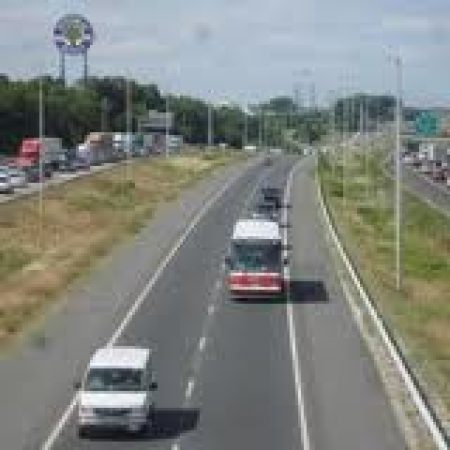One day last month I was listening to “Marketplace” on NPR and heard a bizarre story. According to the reporter, the huge electronic signs in Times Square in New York are now “illegal billboards” that must be taken down. Why? Because Broadway and 7th Avenue are now defined by the Federal Highway Administration as “other principal arterials”—and that whole category of roadways was added to the “National Highway System” by Congress in the MAP-21 legislation. So anti-billboard provisions apply, etc.
My correspondence with FHWA quickly made it clear that “No part of the U.S. government is trying to illegalize or remove Times Square billboards.” But this story led me to dig into what Congress did, and why. This case is a prime example of how the Highway Trust Fund—originally created in 1956 to pay for building the Interstate highway system—has been bloated beyond recognition by Congress over the years, leading to its current dire straits in which spending commitments far outstrip highway user-tax revenues.
The overall federal-aid highway system—the routes eligible for federal highway grant funding—has expanded over the decades, due to lobbying by various highway groups, to a total of 1,077,777 route-miles (compared with just 47,182 route-miles of Interstates), handling nearly 85% of all vehicle miles of travel (VMT). Most of these route-miles are highways that existed before the Interstates and were long the responsibility of state DOTs, not the federal government.
Congress made a major change in the 1991 reauthorization bill, ISTEA. It created the National Highway System (NHS) as an expanded version of the Interstates, adding to their 47,182 route-miles “other principal arterials” deemed important for commerce, for military mobilization, as connectors to military installations, and as intermodal connectors. These routes would get higher priority for federal highway grants than the rest of the federal-aid system. Until recently, the NHS totaled 162,870 route-miles. (Incidentally, knowledgeable highway people told me that when it came to nominating highways to be included in NHS, state DOTs took two different approaches. Most used an expansive approach, to get as many additional miles as possible positioned for increased funding, but others used a narrow approach, not wanting to bear the additional costs that come with federal funding.)
In 2012, as part of MAP-21, Congress disregarded the previous selection criteria and basically decreed that all the remaining highways already categorized as “other principal arterials” would become part of NHS (although FHWA has some degree of discretion over the details, and has not finished the new designations). If all remaining OPAs are added, that would add another 61,424 route-miles to the NHS, expanding it nearly 38% to 224,300 route-miles.
What this would do is increasingly federalize critically important major arterials in U.S. metro areas, bringing them somewhat increased funding priority at the price of increased federal restrictions and controls. If Congress were serious about generating a long-term, fiscally sustainable reauthorization bill, one good first step would be to un-do the MAP-21 expansion of NHS. A much larger step would be to redefine the federal-aid system to include just the(reformed) NHS, giving back to the states the responsibility to pay for, manage, and maintain all the rest of their highways.
(This article first ran in August’s Surface Transportation Innovations)






